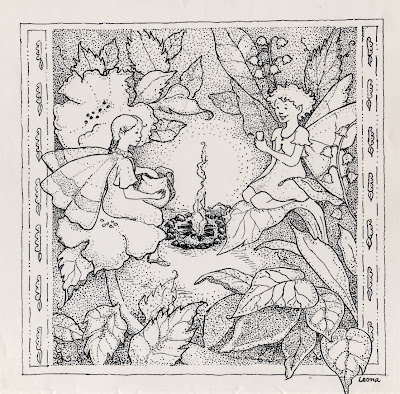Happy Ever Aftering! New Fairy Tales book giveaway contest at Enchanted Conversations!
 |
| I did this pen and ink drawing of faries a couple of years ago. I call it "Break time For Fairies".ion |
When I was a kid I loved reading fairy tales! I loved the work of the Grimm Brothers and Hans Christian Anderson. Two of my favorite fairy tales were The Goose Girl and The Seven Swans. Funny how not that many traditional fairy tales actually had fairies in them!
I still love traditional fairy tales and many of the new versions of fairy tale that are being written all the time! Jane Yolen is a special favorite fairy tale writer of mine! Check out her work here! http://janeyolen.com/
If you like fairy tales be sure and check out the New Fairy Tales book giveaway contest over at Enchanted Conversations:http://www.fairytalemagazine.com/2013/10/new-fairy-tales-book-giveaway-two-copies.html
 |
| At some point I colored this with colored pencils! |
Wikipedia defines Fairy Tales:
A fairy tale (pronounced /ˈfeəriˌteɪl/) is a type of short story that typically features folkloric fantasycharacters, such as fairies, goblins, elves, trolls,dwarves, giants, mermaids, or gnomes, and usuallymagic or enchantments. Fairy tales may be distinguished from other folk narratives such aslegends (which generally involve belief in the veracity of the events described)[1] and explicitly moral tales, including beast fables.
In less technical contexts, the term is also used to describe something blessed with unusual happiness, as in "fairy tale ending" (a happy ending)[2] or "fairy tale romance" (though not all fairy tales end happily). Colloquially, a "fairy tale" or "fairy story" can also mean any farfetched story or tall tale; it's used especially of any story that not only isn't true, but couldn't possibly be true.
In cultures where demons and witches are perceived as real, fairy tales may merge into legends, where the narrative is perceived both by teller and hearers as being grounded in historical truth. However, unlike legends and epics, they usually do not contain more than superficial references to religion and actual places, people, and events; they take place once upon a time rather than in actual times.[3]
Fairy tales are found in oral and in literary form. The history of the fairy tale is particularly difficult to trace because only the literary forms can survive. Still, the evidence of literary works at least indicates that fairy tales have existed for thousands of years, although not perhaps recognized as a genre; the name "fairy tale" was first ascribed to them by Madame d'Aulnoy in the late 17th century. Many of today's fairy tales have evolved from centuries-old stories that have appeared, with variations, in multiple cultures around the world.[4] Fairy tales, and works derived from fairy tales, are still written today.
The older fairy tales were intended for an audience of adults, as well as children, but they were associated with children as early as the writings of the précieuses; the Brothers Grimm titled their collection Children's and Household Tales, and the link with children has only grown stronger with time.
Folklorists have classified fairy tales in various ways. The Aarne-Thompson classification system and the morphological analysis of Vladimir Propp are among the most notable. Other folklorists have interpreted the tales' significance, but no school has been definitively established for the meaning of the tales.


Comments
Post a Comment